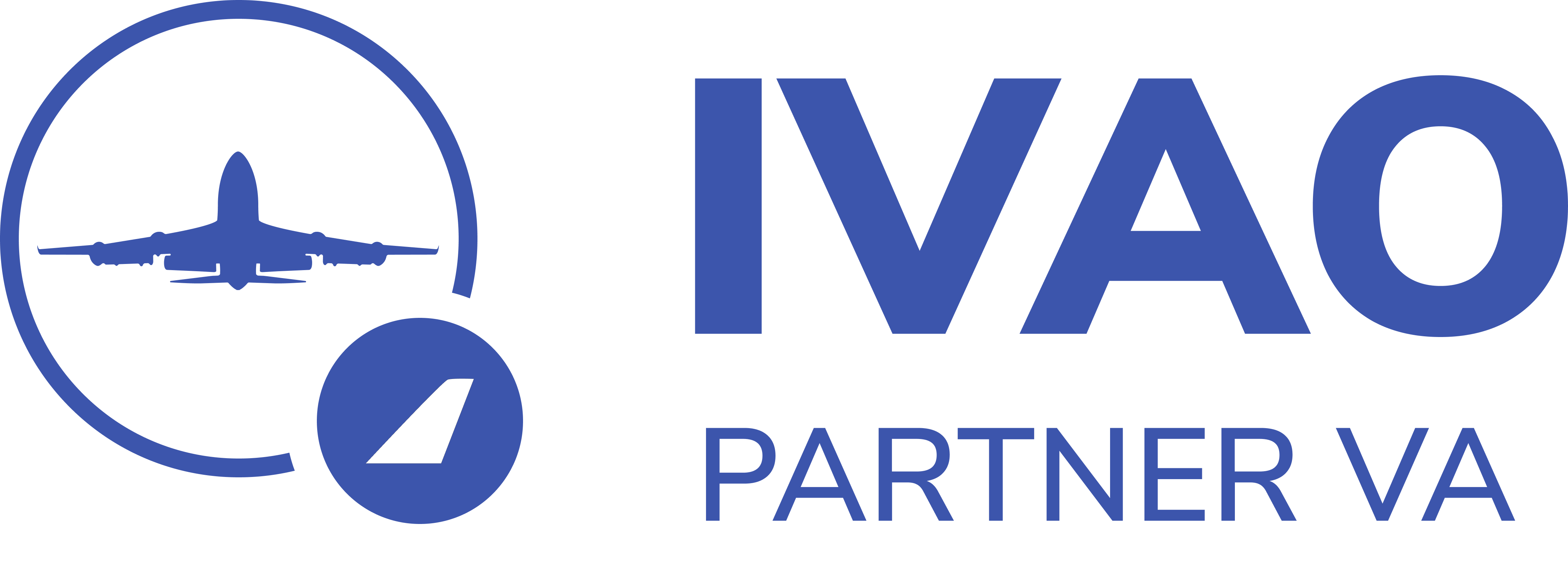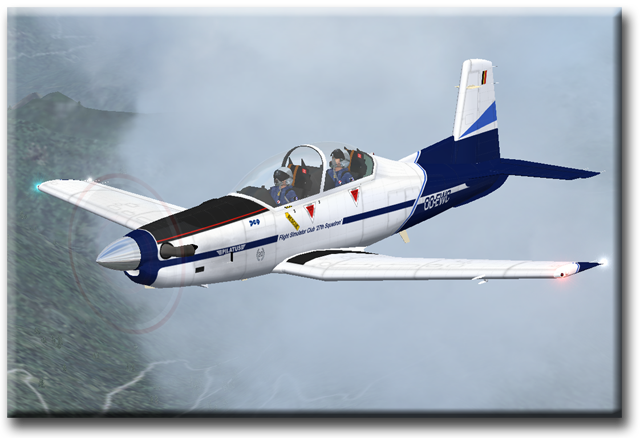As of March 1956 the Republic F-84F Thunderstreak enters the service of the 10th Wing. At first in the 27th Squadron, later in the 23rd and 31st Squadron.
The Thunderstreak is the first aircraft of the 10th Wing able to break the sound barrier during a steep dive.
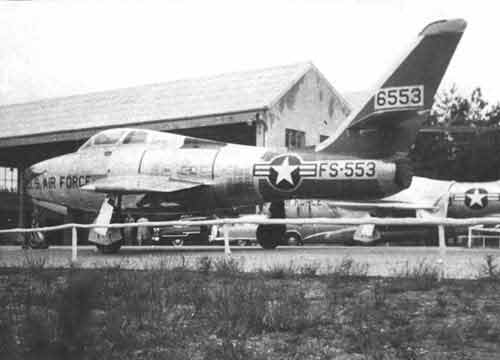
A large number of Thunderstreaks are flown over from the United States. During their transit
flight they bear US Air Force markings. Tail, rear fuselage and wingtips are painted red to
facilitate search and rescue in case of emergency. This is aircraft 53-6553 that will serve as
FU-114 in the Belgian Air Force. The aircraft is parked in front of a hangar on the Sierra line
shortly after touchdown May 18, 1956.
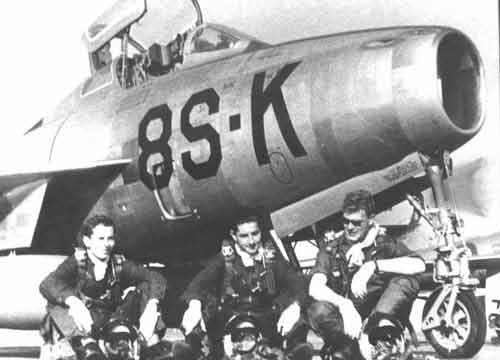
During the early days the F-84F Thunderstreaks remain bare metal only bearing large black
squadron codes on the nose like this picture from 1956. RA for the 27th, Z6 for the 23rd
and 8S for the 31st ‘Tiger’Squadron.
From left to right pilots Jean Schoefs, Jan Mannaerts en Swa Pauwels.
On some bare metal aircraft squadron colors are applied on the rudder, the wingtips and on
nose around the air intake. These colors are: blue/white for the 27th, red/white for the 23rd
and yellow/black for the 31st Squadron
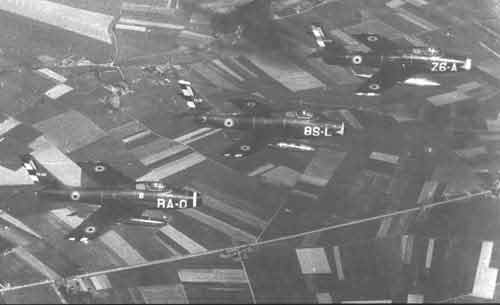
The Thunderstreaks do not remain bare metal for long. At the end of 1956 NATO adopts a
camouflage color scheme and soon our Thunderstreaks are painted accordingly. Additionally .
the large black squadron codes are replaced by white ones. The squadron colors on the nose
wings and rudder are continued to be applied.
From left to right this picture shows an aircraft of the 27th, 31st an 23rd Squadron in full
squadron colors. Only the first aircraft bears the new version of the 10th Wing crest just
the cockpit: a red lion on a light blue shield.
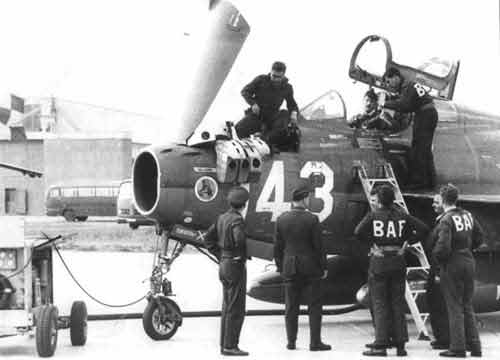
As of the middle of 1962 the squadron codes disappear and are replaced by an enlarged tail
number, sometimes accompanied by a squadron emblem. Additional markings are often
applied during important exercises.
Adjt. Gorré personalized his aircraft, the FU-143, by adding his name just above the tiger
emblem on the nose of his aircraft during the Tactical Weapons Meet at Hopsten, Germany June 13-28, 1963.
In the cockpit Capt. Brignola.
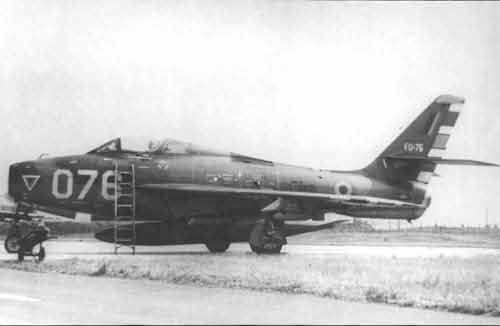
As of the middle of 1962 when squadron codes disappear the aircraft are not assigned to a
specific squadron anymore. Therefore the aircraft of the 10th Wing bear the colors of all three
squadrons on the rudders and wingtips, like this FU-76. Note the ‘illegal’ 23 Devils badge on the nose.
The end of the 27th Squadron
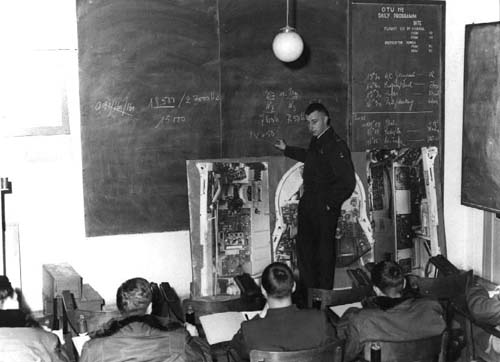
The 27th Black Panthers Squadron functioned more or less as a training unit during the
Thunderjet days. This task becomes really important as the Thunderstreak arrives.
October 17, 1960 the 27th Squadron is officially renamed to Operational Training Unit.
As of now the main task of the OTU is the operational training of new pilots.
Until its disbandment June 4, 1962 it will train 133 pilotes.
This also means the definitive end of the 27th Squadron.
On this picture Capt. R. Van Reempst, instructor pilot at the OTU.
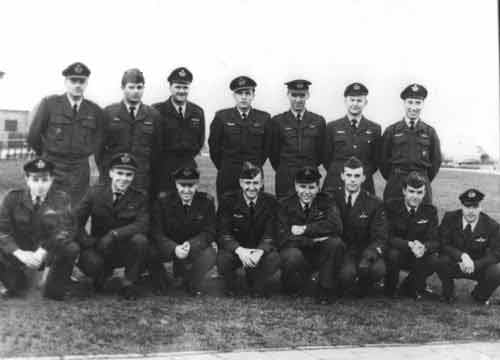
The 27th ‘Black Panthers’ Squadron at the establishment of the
Operational Training Unit October 17, 1960.
From left to right:
Standing:
Derudder, Strubbe, Osaer, C.O.Van Sieleghem, Vandevelde, Van Casteren, Ruelens
Kneeling:
Berten, Boerewaert, Van Reempst, Boone, Vanderkrieken, Dauchot, Ghys, Coppens
 NL
NL  EN
EN 

